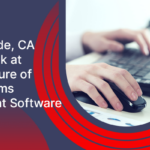How Claim Management Companies Can Enhance Their Practices
October 18, 2024
The landscape of claims processing software continues to undergo dynamic transformations, mirroring the evolving needs and challenges of the industry. In this intricate ecosystem, Claims Software also referred to as Claims Processing Software, stands as the keystone for Third-Party Administrators (TPAs), streamlining and managing claims operations efficiently.
However, the conventional ‘one-size-fits-all’ approach within the realm of claims software is increasingly proving inadequate. As the industry grapples with a spectrum of diversified client prerequisites and complexities, a paradigm shift has emerged. TPAs are now at the forefront of a pivotal transformation – the era of customization.
The significance of customization in TPA software extends beyond possessing a robust system; it encompasses tailoring solutions to address the unique and specific demands of each client. This blog is dedicated to unraveling the multifaceted aspects of customization in TPA software. It aims to explore the crucial significance, myriad benefits, and intricate details of this approach, illuminating its profound impact on revolutionizing the landscape of claims processing.
Significance of Customization in Claims Software
The significance why customization matters in claims software. The rigid nature of off-the-shelf solutions often falls short of addressing the intricacies of individual client needs. Customization allows TPAs to adapt the software to distinct workflows, compliance standards, and industry-specific regulations. By tailoring the software, TPAs ensure streamlined processes, improved accuracy, and enhanced efficiency in claims processing.
Tailoring Solutions to Client Needs
This segment delves deeper into how customization aligns with specific client requirements. It highlights the flexibility of TPA software to integrate unique features, modify interfaces, and accommodate various data formats. By understanding client pain points, TPAs can incorporate specialized modules, reporting tools, and user interfaces tailored to the client’s industry, facilitating seamless claims management and client satisfaction.
Obstacles and Resolutions in Executing Customization
This part focuses on the challenges faced during the implementation of tailored solutions and provides strategies for overcoming them. The program tackles concerns about scalability, integration intricacies, data security, and the capacity to adapt the system while customizing it for specific clients. Furthermore, it delves into tactics and optimal methods to effectively overcome these obstacles, guaranteeing smooth customizing procedures.
Practical Consequences and Examples of Achievements
TPA software customization is needed since a one-size-fits-all approach no longer works. Clients across industries and sectors need customized solutions that match their workflows, compliance requirements, and regulatory environments. Software that smoothly integrates with a client’s operational structure is becoming the standard for claims processing excellence.
This section explores practical case studies or success stories that demonstrate the concrete benefits of customizing TPA software. The examples presented demonstrate how customized solutions have greatly increased the efficiency of claims processing software, minimized mistakes, improved customer satisfaction, and strengthened the competitive edge for TPAs. These practical instances exemplify the profound impact of personalization in practice.
Key Determinants of the Transition towards Customization
The fundamental issues that have made it necessary to shift towards tailored solutions. This text examines the wide range of requirements from clients, shifts in regulatory frameworks, progress in technology, and the advantages gained through customized software. Comprehending the necessary nature of customization in current TPA software requires a deep understanding of these driving dynamics.
TPAs derive from customized claims software emphasizing improved operational efficiency, reduced errors, faster processing times, and greater adaptability to industry changes. Customization fosters a competitive edge by empowering TPAs to offer personalized solutions, ultimately leading to increased client retention and loyalty.
Conclusion
It becomes clear that claims processing software depends on adaptive and client-centric solutions as this TPA software modification research concludes. The future of the industry depends on customized software that satisfies the needs of varied clients.
Customization represents a dedication to excellent service, not just operational efficiency. It shows a TPA’s commitment to understanding and meeting clients’ requirements. Customization puts TPAs at the forefront of innovation in an industry that is always changing and technologically advanced, helping them stay nimble, competitive, and ahead.
7 Features Every Online Claim Management System Needs
June 27, 2024What to Look for in Claims Management Software?
May 8, 2024









